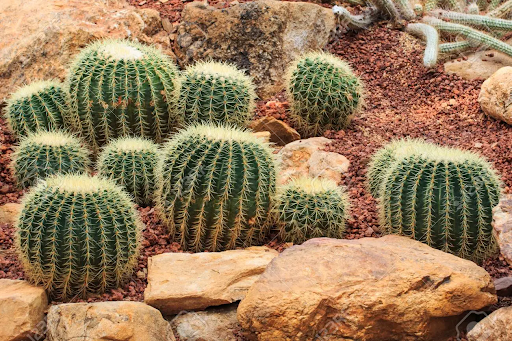Imagine a plant thriving in a dry region where no plant survives, where your thoughts can lead you. Right!! The answer is cactus plants or cacti. The plant has a thick coat that helps to lock the moisture inside, and this moisture becomes the sap of the plant. Nettles protect the juice from any outside attack. The plant requires a small area and little water to grow.
The beautiful plant is now preserved in plant nurseries and conservatories as it becomes a demanding plant among the masses; it still grows in the wild. The plant has many amazing facts which are hidden from the world. So let’s begin our journey to learn more about this magnificent plant:
Unknown Yet Interesting Facts about Cactus Plants
Cacti open their stomata at night
Cactus plants must put great effort into storing water, including opening their stomata at night. You might know that, generally, plants open their stomata during the day.
For the process of photosynthesis, intaking carbon dioxide and releasing oxygen is inevitable. Photosynthesis lets plants make their own food and energy for their growth of plants.
Plants transpire and lose water; in deserts, water loss is high on hot, sunny days. The cactus plant has adopted a process of crassulacean acid metabolism(CAM). CAM makes cacti open their stomata at night when the temperature is cooler than the day. It is quite the opposite process that other plants use. Cactus plants store carbon dioxide at night and, for food production, release it during the day.
| Fact: During summer, it is so hot that the plant keeps its stomata closed both night and day. This puts the plant in a dormant phase, a phase where a plant stops growing. |
Cactus have spines, not leaves
Leaves are an essential part of plants; they make food for plants. Cactus plants do not have leaves, they have spines instead.
The spines have many forms also:
- Straight
- Curved
- Round
- Hooked
- Hair-like
- Needle-like
The plant has its own reasons to support these spikes:
Protection
Plants are a food source for many herbivores, and cactus is no exception. The cactus plants attract many animals, so to keep them safe, it has spikes. These prickles pierce the skin, leaving deep, painful wounds.
Air trapping
Prickles save water loss due to the airflow by breaking the flow of air. If the spines don’t create the barrier, there will be too much water evaporation.
Shade
The climate of the desert is very hot, and the sun can dry out all the moisture from the plants. The prickles provide protection around the plant to keep the water locked inside.
| Fact: The spines blown away due to strong desert winds propagate themselves in a new location, ensuring the plant survives somewhere away from the parent plant. |
Life span
Almost all houseplants have short lifespans compared to cactus plants, which can live for decades—making the plant a good choice for lovers who want a plant that lives for a longer period, around 10 to 200 years.
Though plant requires minimal care, keep a few things in mind:
- Water your plants on a daily basis. Avoid overwatering and keeping your plant in extreme temperatures.
- Keep the plant in a natural environment. Keeping the plant near window sills for longer may burn the plants and lead to discoloration.
- Opt for soil that drains the water properly
| Tip: In winter and autumn, keep your plant at a temperature between 45 to 55 degrees Fahrenheit, and in summers, the temperature would be between 65 to 95 degrees Fahrenheit. |
With little care, the beautiful succulent survives in any environment and makes your house regal.


More Stories
Versatile Universal Load Cell for Aircraft Weighing – MODEL: UNV, UNV-C
Why Hiring A Content Writer For Your Website Is A Smart Concept
Brazilian Hardwood Decking: The Ultimate Outdoor Solution